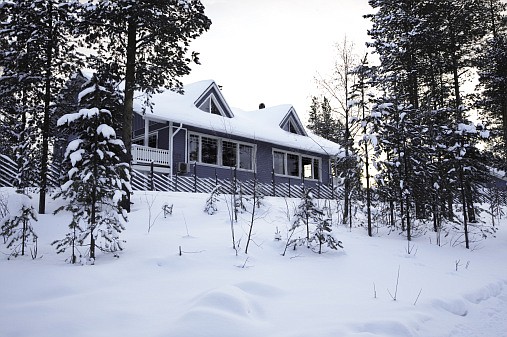The beginner's guide to winterizing your home
January 12, 2012 at 10:04 a.m.
Everyone's familiar with the old saying "an ounce of prevention is worth a pound of cure" but in winter, it's actually worth a heck of a lot more than that. Especially when you consider the beating your house can undergo if you don't take steps to adequately fortify it against the ravages of winter. If you've skated over the thin ice this long without winterizing your home and have emerged unscathed, count your blessings. But also understand, this kind of luck won't last forever. Here are a few helpful tips for winterizing your plumbing, preventing ice dams, and general tips for how to save energy in the winter.
Saving Money Through Insulation
Winter is the absolute worst time of year for wasteful spending. If you're the type of person who doesn't even like to leave the house in winter because you're concerned that opening the door will drive up your energy bill, it's time to stop being a hermit and learn how to save energy in the winter. One of the areas of your home that's most susceptible to letting in the cold air are your windows. But even if you don't feel a cold draft of air each time you pass by, this doesn't mean you're properly insulated. Fortunately, you don't have to spend thousands of dollars on new windows. You can pick up inexpensive window insulation kits from your local hardware store that come in the form of self-adhesive rubber sealing strips that you can slap on yourself. Using heavy layered curtains is another great way to keep your drafty windows insulated. Still, another method of ensuring that the warm air your heater's generated stays inside is by having your attic insulation checked. Heat rises, and unless you've got enough batting up there to keep it from seeping out, it will.
Those Darn Ice Dams
What the heck is an ice dam, you ask? Great question. Ice dams happen when snow melt isn't able to property drain from your roof due to clogged rain gutters. When that happens, the water that was unable to drain can refreeze and form an actual dam of ice that prevents further runoff from escaping. The end result can cause a backup of water that could cost you thousands of dollars of damage if the water seeps into your roof or interior walls. The easiest way of telling if you have an ice dam is through the presence of icicles hanging from the eaves of your home. The best way to prevent them is to have your rain gutters cleared of debris before the onset of winter.
Bundling Up Your Pipes
Burst pipes are a very real threat that can cost you thousands of dollars. Winterizing your plumbing is critical to avoiding this nasty winter surprise. If you're a do-it-yourselfer, you can pick up a foam rubber pipe insulation kit at any hardware store. Foam insulation works just like you'd imagine it might -- you simply wrap it around your exposed pipes, and it's just like throwing a nice warm winter coat over your home plumbing's shoulders.
Content Provided by Spot55.com





